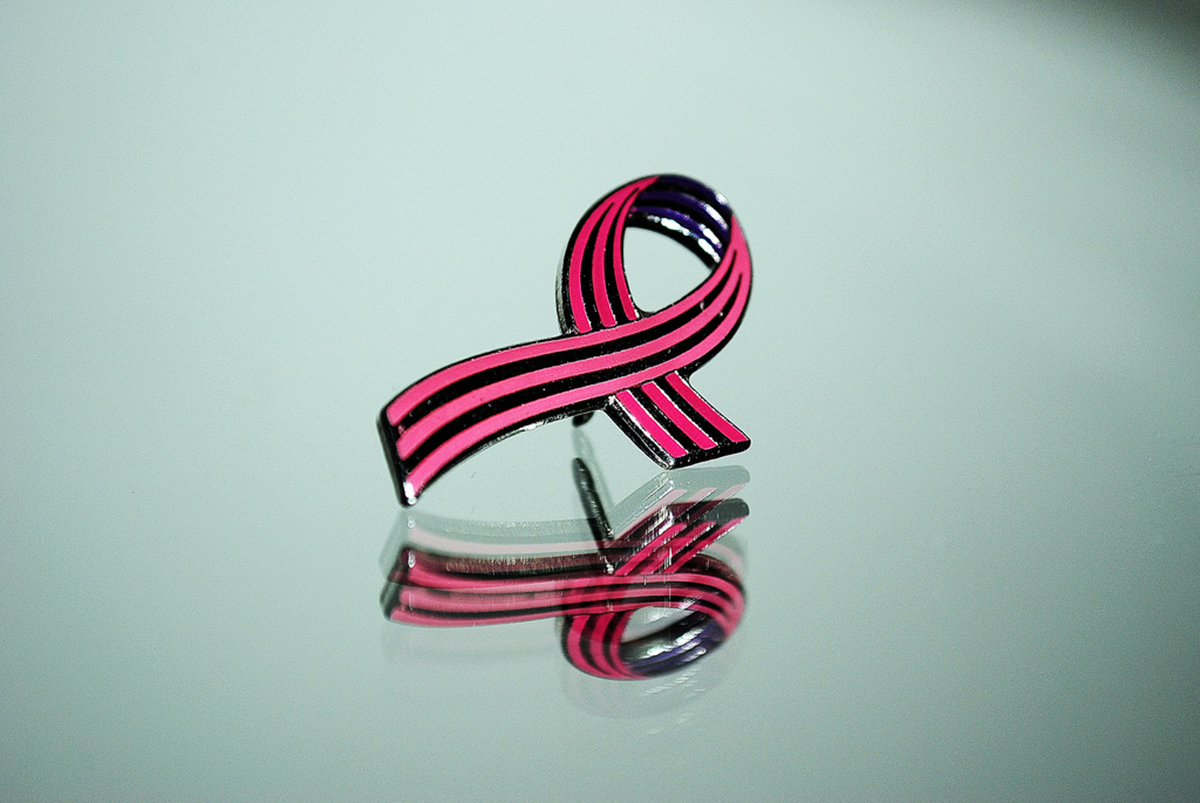Certain kinds of cancer are an especially devastating diagnosis. One of them is glioma, the most common form of brain cancer.An all-too-typical case of glioma happens something like this. I'll use the fictional story of a 40-year-old man named Ivan.
Early Symptoms of Cancer Can Be Subtle
Ivan is an active, happy, husband and father of three with a responsible position in a growing company. He finds time to spend with family and friends, and he loves sports and nature. What Ivan doesn't know is that he has a tumor about the size of a golf ball growing in the frontal lobe of his brain.

The first time Ivan suspected something was wrong was when he started forgetting to put meetings on his calendar. He attributed it to too much holiday fun. Then he simply lost interest in doing things with his family. His son and daughter had been the joy of his life, and they still were, but somehow he wasn't motivated to do things with them. He became irritable over silly things, and then he actually got into a fight at work, which resulted in a suspension from his job. Finally, one morning Katya, Ivan's wife, hears a thump in the toilet. Ivan has collapsed He's having a gran mal seizure.
Finding Cancer Results in Drastic Treatment
At the hospital, Ivan and Katya are informed that the real problem is that Ivan has a brain tumor. He's immediately put on an anti-seizure medication, and a steroid to stop swelling in the part of his brain around the tumor. Since they are at the finest hospital in the city, a neurosurgeon offers to perform a three-hour surgery to remove the tumor, which, she assures them, might even be benign. The risk of death and paralysis is low, and it's possible that whole problem will be solved with the surgery.
Ivan has the surgery the same week. The surgeon removes a flap of skull about the size of the lid on a jar, localizes the tumor with the help of an operating microscope, makes an incision into the brain, and removes the mass. The tumor is sent to the pathology lab. Ivan pulls through the surgery but the news isn't good. The tumor is malignant. The surgeon was able to remove every visible trace of the tumor, but this turns out to be a cause for false hope.
READ Cancer Treatment Myths - Believe Them Or Not?
Treatment of Cancer Can Be Worse Than the Disease
Immediately after surgery, Ivan wants to talk about what's on his mind: how his family will survive when he's gone. Katya, however, will hear nothing of it. She wants to hold on to the possibility everything will be OK. Unfortunately, it's not. The pathologist finds that Ivan's brain tumor was not a glioma, a brain cancer in its early stages, but a glioblastoma, a brain cancer that has expanded in microscopic traces through the brain. Ivan will have to have chemotherapy, which will devastate his immune system, and cause digestive upset and mouth sores, along with radiation, which will damage the parts of the brain which are currently unaffected by the cancer. His young family will spend all their savings and more fighting the disease, but he will get sicker and sicker and die, leaving behind a widow and children exhausted from the struggle over 10 long months.
There has to be a better way. Perhaps in about 10 years there will be, high-intensity focused ultrasound for treatment of cancer.
Treatment Of Cancer With Ultrasound Is More Than Just Possible, It's Already Here
If Ivan had managed somehow not to develop brain cancer until 2026, his story might have read something like this.
Improvements in MRI Are Already Here
Ivan started having unusual symptoms that culminated in a gran mal seizure. He's taken to the hospital, where the doctor orders Molecular Magnetic Resonance Imaging, or an mMRI, a more advanced version of an MRI that can create an image of his brain at a cellular or even molecular level. A technique that was first implemented in 2006, mMRI uses non-toxic "dyes" for a much more detailed view of internal organs. Ivan's doctor tells him that he has a glioblastoma, the most advanced form of a glioma cancer of the brain, but not to worry, the tumor can be destroyed with focused ultrasound treatment without need for opening the skull, and when the tumor comes back, it can be treated just as easily again.
High-Intensity Focused Ultrasound Treatment of Cancer Is Essentially Painless
Ivan is asked to change into a gown, and he is taken into the ultrasound therapy suite. He's given a light sedative, but he doesn't have general anesthesia, and he is placed into position with his back on a table.

Ivan's head is secured in a device called a hemispheric focused ultrasound brain transducer. Something like a gamma-knife, but not using radiation, this device transmits 1,000 or more intersecting beams of ultrasound energy through the scalp and skull. Only where do the beams intersect do they break up brain tissue. In an adjacent control room, the surgeon outlines the tumor, and programs the machine to destroy it. The treatment begins with Ivan awake, but calm, and Katya sitting next to him, holding his hand. In a few minutes, ultrasound has destroyed the tumor.
Targeted Chemotherapy Is on the Horizon
Ivan will still have to undergo chemotherapy, but this will be a very different form of chemotherapy than had been available just 10 years earlier. While he is still in the ultrasound suite, Ivan is given an IV of chemotherapy drugs that inactive because they are trapped inside nanoparticles. As the nanoparticles circulate to Ivan's brain, the doctor activates them with ultrasound so they release their payload of chemotherapy, but only in the area around the tumor where cancer cells may still be active. High concentrations of chemotherapy are delivered to cancer cells, but systemic side effects will be minimal.
Two hours after treatment has begun, Ivan is out of the ultrasound suite, and discharged to go home. He is back at work two days later. His symptoms go away for many months, but when they begin to return four years later, Ivan does not hesitate to call the doctor for a second treatment. Ivan lives to 90 years old, and the $25,000 cost of his cancer treatment does not interfere with his children's education or his retirement.
READ Complementary and Alternative Medicine for Cancer Treatment
Over 72,000 Tumor Patients Have Already Been Treated with Ultrasound
Just how realistic is this scenario?
Ultrasound treatment of tumors is already a reality. Over 22,000 women have had ultrasound ablation of uterine fibroids, and over 50,000 men have had ultrasound removal of prostate cancer tumors. There are currently nearly 250 research centers around the world conducting clinical trials of focused ultrasound for cancers of the breast, brain, liver, and pancreas. Insurance companies and national health ministries are perhaps a little slow to pay for the procedure, but focused ultrasound treatment is a therapy that is here and is here to stay.
- Merckel LG, Knuttel FM, Deckers R, van Dalen T, Schubert G, Peters NH, Weits T, van Diest PJ, Mali WP, Vaessen PH, van Gorp JM, Moonen CT, Bartels LW, van den Bosch MA. First clinical experience with a dedicated MRI-guided high-intensity focused ultrasound system for breast cancer ablation. Eur Radiol. 2016 Feb 6. [Epub ahead of print] PMID: 26852219.
- Sivaraman A, Barret E. Focal Therapy for Prostate Cancer: An "À la Carte" Approach. Eur Urol. 2016 Jan 5. pii: S0302-2838(15)01223-3. doi: 10.1016/j.eururo.2015.12.015. [Epub ahead of print] PMID: 26778462.
- Photo courtesy of williami5: www.flickr.com/photos/williami5/7371700988/
- Photo courtesy of liveu4: www.flickr.com/photos/liveu4/2011237087/
- Photo courtesy of liveu4: www.flickr.com/photos/liveu4/2011237087/


Your thoughts on this